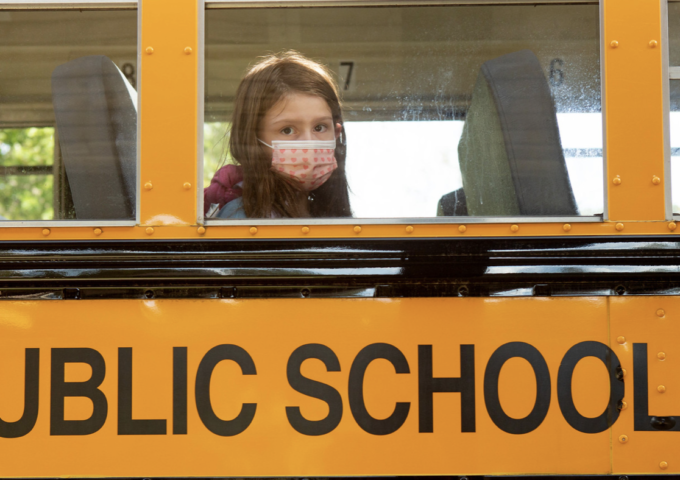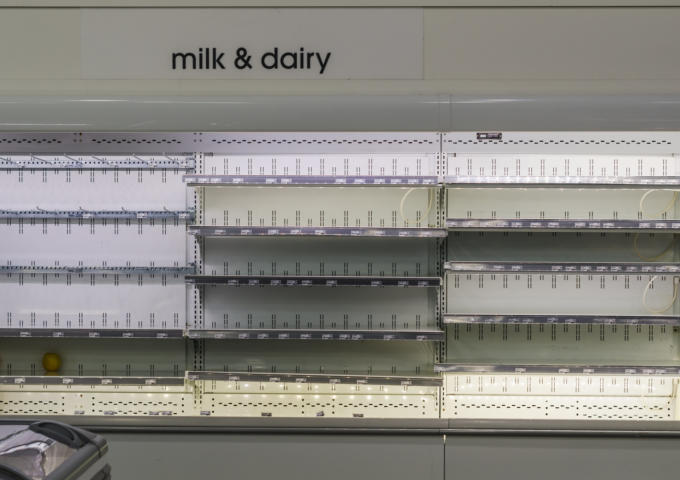Masks came off last month in Philadelphia and around the Delaware Valley. People could look each other in the face (whether we wanted to, or not) and start greeting neighbors and strangers with something other than suspicion. The days of feeling like a Taliban prisoner wrapped in cutesy, quilted designer masks were over.
I was free.
And who was the first person I thanked for my liberation? Donald Trump.
That, of course, makes me anathema to the people who think that our last president bungled the pandemic and killed over 600,000 of our fellow citizens. That crowd will never give him credit for “Operation Warp Speed,” a program that in its breadth and historic impact rivals the race for the polio vaccine. First, I thank Trump. Then, I thank science.
Some people think I have the order wrong there. To be honest, some people don’t even think that Trump should be included in the roll call of pandemic heroes or, at the very least, that he should be far at the bottom of a list behind health care workers, trash collectors, fast food servers, Uber Drivers, Chris Cuomo, Anthony Fauci, and the secular savior: Science.
The irony is not lost on me. Were it not for Trump’s political efforts and organizational skills, Anthony Fauci would have been presiding over a wasteland that makes the Taliban-infected hills of Afghanistan look like Disney World (pre-mask mandate, of course.) Because to harness the power of science, you need structure and impetus. Trump provided both of these, in spades.
Fauci, on the other hand, reaped many of the benefits because instead of presenting himself like the pseudo-politician that he was, he wrapped himself in the mantle of science. When the Left hears “science,” they bow down and pray. It is, for most of them, the divinity they worship to the exclusion of all others, except of course when science tells them that the fetus is a human child, in which case they prefer to worship in the Church of Choice.
But I digress. Anthony Fauci was clearly a politician, because you don’t survive in the cutthroat world of medical research unless you know how to schmooze, comfort, and appeal to the people who have the most influence. As the director of the National Institutes of Allergies and Infectious Diseases, he’s had to deal with egos even bigger than his own, and has become quite adept at surviving, a skill he should have taught to his colleague Debra Birx.
That’s not to say Fauci hasn’t been heroic in his own way. This is not a hit job on him, and while much of the shine has worn off of his reputation in many circles since the release of those emails earlier this month, he helped bring us to the point where we are now able to take off those masks (the same ones he told us weren’t effective until they suddenly were), shake hands, go back to the gym, and just breathe again. Republicans shouldn’t hate him just as Democrats shouldn’t canonize him. He’s a man, with a mission, and he executed it about as well as could be expected.
But he didn’t do it alone, and he could not have done it without Trump, who provided him and his colleagues with the tools to develop the vaccines that have made it possible for us to open up. We were like those cicadas, existing in the damp underground darkness for 15 months only to emerge into the glowing orange sunlight.
And while I’m relieved that we are coming out of that tunnel, and while I am cognizant of the contributions the scientists have made (and the damage that egomaniacal politicians like the totalitarian troika of Andrew Cuomo, Phil Murphy, Tom Wolf have wrought), I’m annoyed that so many on the Left refuse to give credit to Donald Trump for getting us to this point. It’s ridiculous to see them touting “the science,” while ignoring just who it was that enabled science and scientists to create a vaccine with a speed that Chuck Yeager would envy.
Those who say “trust the science” only want us to do so on their own terms, apparently. Science (as opposed to “The Science”) is how we learn facts about the natural word, but it cannot tell us the right thing to do with those facts. When science tells us that the unborn child feels pain, can survive at increasingly earlier stages in his development and has all of the human DNA it will ever have milliseconds after conception, the progressive poobahs scoff.
But they will cling to the less-than-credible statistics that show common drug store masks will prevent the spread of the COVID-19 virus as if it were floating debris and they were watching the Titanic take a nosedive in the North Atlantic.
It’s all about politics, perception, and posturing.
And the conservatives aren’t free from blame, either. We, who should be celebrating the success of Operation Warp Speed and croaking about how a Republican president ended up saving the Republic, are instead questioning the advisability of getting vaccinated. I’m not talking about those who have legitimate objections, which can be discussed and possibly resolved with a review of the … science.
No, I’m referring to people on Twitter and in real life who are sticking pennies to their foreheads, convinced that the vaccine has magnetized their innards and they are now like the Marvel Hero Iron Man. These people exist, and they say they are conservatives, but they are nothing other than the flip side of the folks who deny the humanity of the unborn child.
So, while throwing my mask in the air and twirling like a vaccinated Mary Tyler Moore earlier this month, I was thinking of, in no particular order:
1. Anthony Fauci’s brain
2. Donald Trump’s business acumen
3. Debra Birx’s feelings
4. Tom Wolf’s arrogance
5. Chris Cuomo’s chutzpah
6. The Science
Christine Flowers | Philadelphia
_____________________
We can’t wait for the next pandemic for a better PPE plan
Right now, Americans can purchase nearly limitless quantities of masks, hand sanitizer, and other personal protective equipment.
But this time last year, it was an entirely different story. Even hospitals and doctor’s offices were running out of PPE. The shortages almost certainly cost some health-care workers their lives.
COVID-19 won’t be the last pandemic we face. We need to be much better prepared next time – with ample stockpiles of PPE ready to distribute to areas in need.
Last spring, the virus laid bare the vulnerabilities in our health-care supply chains. Prior to COVID-19, China supplied 90 percent of America’s medical masks and half of the world’s PPE. But China’s strict lockdowns shuttered factories in January and February, leaving America unable to acquire enough supplies to prepare for the coming surge of infections.
The shortages hit hospitals in disadvantaged communities the hardest.
These hospitals disproportionately serve older, sicker, minority patients who are more likely to be on Medicare and Medicaid – or uninsured entirely. These patients require more care and need to be readmitted more frequently.
As a result, these institutions operate on razor-thin margins and struggle to keep their doors open even in normal times. So they can’t always afford to keep months’ worth of PPE on hand.
Hospitals in wealthier urban and suburban neighborhoods, by contrast, often have storerooms full of supplies.
When doctors and nurses in disadvantaged hospitals lack PPE, it affects patient outcomes too. If providers don’t have adequate protection from an airborne virus, they’re more likely to contract the infection and pass it to patients – who were already at higher risk due to their incomes, ages, and ethnicities.
It’s a vicious, self-reinforcing cycle.
Fortunately, there’s a way to break it – and potentially save thousands of lives in the inevitable next health crisis.
The supply challenge has been addressed. Domestic PPE manufacturing know-how and capacity means that the next crisis can be met with masks and other critical PPE made here in America.
But matching supply with demand will require more effort.
Establishing a federal data sharing network would allow public health authorities and hospital administrators to track which facilities have adequate PPE stockpiles – and which don’t. No such network currently exists, which makes it difficult to know which hospitals and clinics are close to running out of supplies.
The Biden Administration’s Department of Health and Human Services can take action now to bridge these supply and demand gaps. HHS can start by conducting outreach to state health and emergency response agencies, informing them of CARES Act funds that can support state-level stockpiles. Pre-deploying more supplies locally would increase awareness and resilience during the next pandemic.
Congress should play a role as well by authorizing and funding the FDA’s ability to collect and share standardized information on state and local PPE and crucial medicines supplies. Such data sharing would help public-private partnerships disseminate supplies where they’re needed, when they’re needed – and re-route those supplies during localized emergencies.
Doctors and nurses should never have to reuse old PPE or worry about supply shortages, no matter what communities they serve. With the right planning, they won’t have to.
Dr. David Bray is inaugural director of the Atlantic Council’s GeoTech Center. He served as IT chief for the Centers for Disease Control and Prevention’s Bioterrorism Preparedness and Response Program from 2000-2005 and responded to 9/11, anthrax in 2001, West Nile Virus, Severe Acute Respiratory Syndrome, monkeypox in 2003, and other outbreak events. Originally published in the International Business Times.
___________________
Under H.R. 3, pharmacists would not be able to fill every prescription
As a pharmacist and pharmacy researcher, I watch cutting-edge medicines save and improve patients’ lives every day.
And as the father of a daughter with Ulcerative Colitis – an autoimmune condition that causes severe bowel problems, and potentially life-threatening bleeds – I’ve seen firsthand why it’s important for patients to have access to a wide variety of treatments. UC often requires trial and error to find the right medication that works for the patient. I shudder to think what would happen if my daughter could not access the drugs her doctor prescribes.
That is why I’m so concerned about a recently introduced bill. In a well-intentioned effort to make medicines more affordable, lawmakers are considering legislation that would base U.S. drug reimbursements, in both Medicare and private insurance plans, off of drug reimbursements in other developed countries.
The problem is that the government-run health-care systems in those countries – France, Germany, Canada, Japan, Australia, and the United Kingdom – centrally set drug prices while failing to take into account those drugs’ value and cost-benefit, while also failing to cover certain cutting-edge medicines. Patients in those nations cannot access certain lifesaving drugs. Fewer than two-thirds of new medicines created worldwide from 2011 to 2018 are available in the United Kingdom, Germany, and Japan. Fewer than 50 percent of them are accessible in Canada and France.
In the United States, meanwhile, the competitive marketplace ensures that patients have greater access to medicines than anywhere else. Nearly 90 percent of medicines created over that seven-year period are available here.
Mimicking other countries’ reimbursement policies would inevitably slow down, or entirely prevent, drug launches here in the United States.
The bill in question, designated H.R. 3, would also make patients worse off in the long-run by discouraging lifesaving research. It costs $2.6 billion, on average, to develop a new medicine. That price tag is largely due to drug developers’ high failure rate – fewer than 12 percent of experimental medicines in clinical development ultimately receive FDA approval and reach pharmacy shelves.
Instituting price controls would make their potential investment into research & development that much more risky. A study by Vital Transformation, an international health economics firm, found that there would have been at least 60 fewer drugs available to patients over the next decade if H.R. 3 had become law.
America boasts some of the world’s brightest scientific minds, as well as current capacity to foster innovation. There is nothing to gain in the short- nor long-term by starving scientists of the R&D funding they need to find new treatments for Crohn’s disease, cancer, heart disease, Alzheimer’s and other serious ailments. But even more importantly, it makes no sense to stifle treatments that can cure and promote a better quality of life for people like my daughter.
None of my fellow pharmacists ever wants to tell a patient, “sorry, we can’t fill that prescription.” But that’s exactly what we’ll be saying if Congress passes this misguided bill.
Shane Desselle, Ph.D., is president of Applied Pharmacy Solutions.




